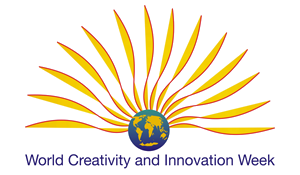Stanford Crash Course on Creativity – Question Assumptions & Brainstorm – Week 5
Here’s a challenge to throw your group – ask people to line up according to their birthdays, pause, without talking. Then see what happens.
This week’s installment for growing your creativity courtesy of Tina Seelig at Stanford University is to go beyond what you think is possible to invent new solutions. As my undergraduate mentor Ruth Noller is known to have said, “The impossible just takes a little bit longer” (and yes, I’m sure others have said that too).
The problem for everyone using their creativity is that most people run with the first solution they can find: it may not be the best answer, only the first one. When asked to generate more than one possible solution to something, people quake; many complain it’s a waste of time. Is it?
Tina makes a good point to remember when leading brainstorming sessions – the people involved may believe that brainstorming is just like a conversation where people throw out ideas – they are unaware of the specific rules and researched methods professionals use to encourage fresh thinking. They’ll engage at first because they think it will be easy and then pull back because they actually find it hard to do.
The rules for brainstorming are not intuitive, they may be easy to repeat and challenging to master. Telling people to defer judgement does not mean they will effortlessly refrain from evaluating ideas as soon as they are offered. There’s a fix for that by way of demonstration. Ask people to generate the worst ideas they can for an easy topic, and then have them select the worse of the worse. Then, pass that idea along to someone else or another team and have them make a brilliant idea out of it. Works every time.
Setting the stage for the idea session – the reminders mentioned
Make sure to
- include a diverse group of people
- frame the right question in the right way (and not the wrong question and not in the wrong way) for interesting solutions
- create a space that fosters idea generation – the larger the space, the more the ideas (anyone know if there is research for this?)
- stand up – apparently more ideas are generated when people are out of their seats (and not in them)
- say how long the session is going to be
- announce how decisions will be made from the comments
- have everyone contribute
- generate as many ideas as possible
- encourage people to build on other people’s ideas so that everyone feels they have contributed to all the ideas
- remind people this is an exploration for new ideas from which later, decisions will be made as to which is most viable
References
How NOT to Brainstorm
How TO Brainstorm
How to use a Mindmap (article)
This week’s assignment? It’s one step of a larger picture. Here’s the challenge:
Your challenge is to tackle the problem of NOT GETTING ENOUGH SLEEP.
So many people suffer from sleep deprivation. Some have babies who wake them up, some sleep with someone who snore, and others deep with jet lag. The problems with sleep are endless.
Step 1: Define the sleep problem you’ll solve.
Step 2: Generate at least 100 ideas to solve that problem.
Step 3: Submit your favourite solution in the form of a presentation – a video, prezi, or slides (of 2 minutes or less) that tells a story which clearly shows the problem and demonstrates the solution.
My take?
It’ll work, for sure. People who engage in these exercises will experience the ‘high’ of thinking differently than they normally do. Call it dopamine hits or explain it using different kinds of brain chemistry, what’s really great is they’ll change their patterns of thinking and experience it as a rush. They’ll fall in love with the process too, and then they’ll make creative thinking their own. So cool. Well done Tina! You’ve generalized brainstorming for the masses!
Oh, and hey everyone, we’re gearing up for World Creativity and Innovation Week April 15 – 21, 2013. Take a look at the WCIW website and let me know what you think. Feel it’s the right way to go for a theme?
Tchau for now
Marci Segal, freeing leaders’ thinking so they can create new futures
Related articles

